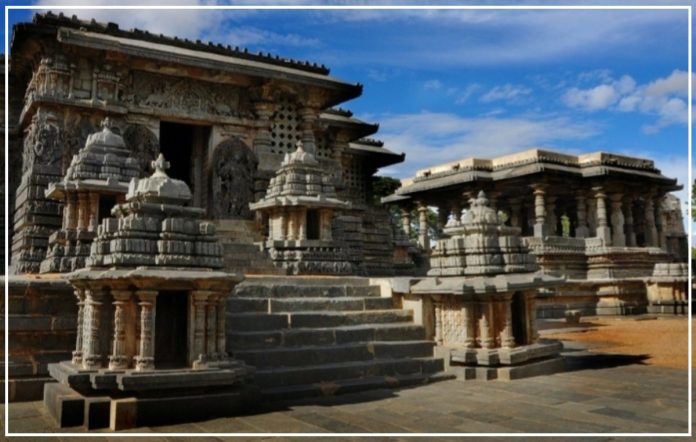The ‘Hoysal Temples of Karnataka’ have been included in the UNESCO World Heritage Site list.
This decision was made during the 45th session of the World Heritage Committee held in Riyadh, Saudi Arabia.
These temples are India’s 42nd UNESCO World Heritage Site, and West Bengal’s Shantiniketan was also added to the World Heritage list.
The Hoysal Temples were nominated by India to be included in UNESCO for the year 2022, and Prime Minister Narendra Modi congratulated this achievement.
The Group of Temples Across Karnataka
The ‘Hoysal Temples of Karnataka’ have been under consideration for UNESCO’s list since April 2014.
These temples are located in Belur, Halebid, and Somnathpura in Karnataka. The Hoysala dynasty, which once had its capital here, is recognized as protectors of art and literature.
The Archaeological Survey of India (ASI) is responsible for preserving these temples.
These temples dedicated to Lord Shiva were built around 1150 AD using dark soapstone, and they feature intricate carvings of Hindu deities.
Under the Patronage of King Narasimha III
The Chennakeshava temple in Somnathpura, Karnataka, was constructed under the patronage of King Narasimha III around 1268 AD.
In Belur, Hassan district of Karnataka, the Kesava temple was built by Vishnuvardhana. The architectural style of these temples is a unique blend of Dravidian and Nagara styles.
Their walls are adorned with carvings of deities and musicians. UNESCO’s recognition is a testament to their historical and artistic significance.
Congratulations and Recognition
Prime Minister Narendra Modi also expressed his congratulations through a tweet. He stated, “A matter of immense joy for India.
The splendid Hoysala temples of Karnataka have been inscribed as a UNESCO World Heritage Site.
Their timeless beauty is a testimony to India’s rich cultural heritage and exceptional craftsmanship of our ancestors.”
After UNESCO’s announcement, Foreign Minister S. Jaishankar stated, “Another piece of good news. More recognition for our traditional art and architecture.”
